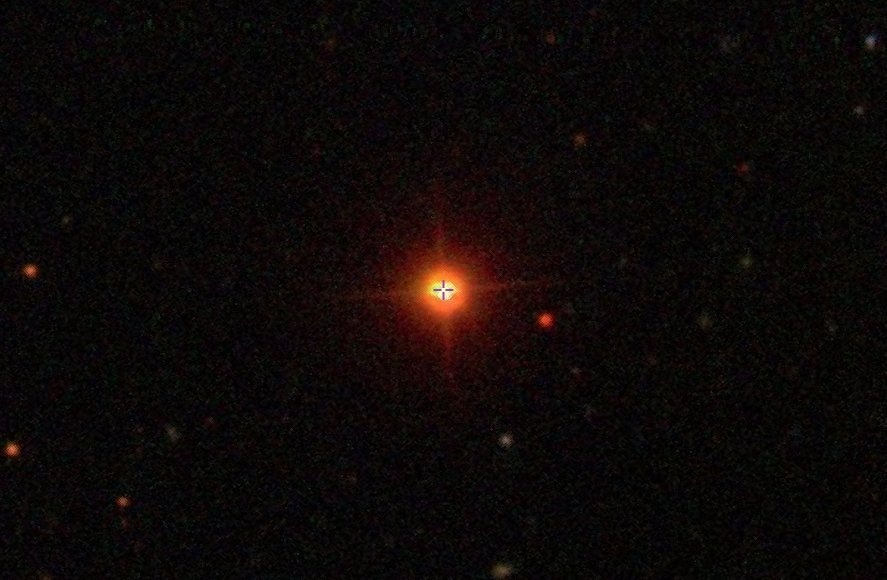The “Goldilocks zone” of habitable planets is likely outdated. Here’s why.

- The Habitable Zone (HZ) is where conditions are just right for liquid water on a planet’s surface.
- Research suggests habitable environments, like subsurface oceans, exist beyond the traditional HZ, especially around M dwarf stars.
- The HZ may be too restrictive. Atmospheric conditions, geological activity, and a planet’s history also affect habitability. Liquid water and potentially life-supporting conditions might exist outside the traditional HZ, requiring a broader search for extraterrestrial life.
To a large extent, the search for Earthlike planets is a search for water. Every living thing we know of requires water in some form, so until we find one that doesn’t, it’s reasonable to make water the focus of our exploration.
That’s why a recent paper by Amri Wandel from Hebrew University in Israel suggesting that liquid water may exist underneath glaciers on planets around M dwarf stars is so interesting. Given that M dwarfs are so much more common in the galaxy than stars like our Sun, this discovery, if shown to be correct, could increase the inventory of known, potentially habitable worlds by a factor of 100. Intriguingly, all of these possible water-rich planets would lie outside the so-called Habitable Zone (HZ) that scientists traditionally have considered the likeliest location for finding extraterrestrial life.
The “Goldilocks” zone
The idea of a Habitable Zone is a key concept in astrobiology. It was first proposed in 1913, but formulated in a more quantitative way about 30 years ago in a seminal paper by James Kasting from Penn State, back when the first planets outside our Solar System were being discovered. The HZ refers to that ideal “Goldilocks” zone around a star — not too hot and not too cold — where water can stay liquid on the surface of a planet for long periods. In astronomical terms, it includes that region around a star between the inner boundary, where water evaporates, and the outer boundary, where it freezes. Many people refer to it as the region where liquid water is “stable” on a planetary surface, but that’s not quite correct. Leave a cup of water outside for a few days, and you’ll find that it all evaporates away.
While the HZ is principally defined based on astronomical parameters, its location varies for different types of stars. It also depends on the geological attributes of the planet, including properties like atmospheric density and extent of cloud cover, and, most important of all, climate feedback mechanisms. Earth is nearly in the center of our own Solar System’s HZ. Mars, which is one and a half times as far from the Sun as we are, is at its very edge. (If, however, Mars were bigger, say with twice the mass of Earth, it likely would still have a thick atmosphere and water oceans on its surface, which would push it into the habitable category.)
Of course, the very term “habitable” is problematic. Even if a planet or moon is smack in the middle of the HZ, it doesn’t mean it’s necessarily life-friendly. Just look at our own Moon. Despite its near-perfect location, it lacks an atmosphere, liquid water, and life. The same goes for exoplanets. Without factors like a thick atmosphere (and possibly a magnetic field) to protect from harmful radiation, a sufficient amount of energy sources, organic compounds that can act as nutrients, and an efficient recycling mechanism (which in the case of Earth is plate tectonics), life might never arise, no matter the location.
By the same token, liquid water and potentially habitable conditions might exist outside the “traditional” HZ. As Wandel and many others have pointed out, exoplanets around many types of stars could possibly have subsurface oceans. In principle, these ice-capped oceans could exist on worlds with surfaces as cold as -73oC, or -99 oF — the estimated temperature on Trappist-1g. So-called rogue planets, not attached to any star, might even have subsurface water if there’s enough heat generated by radioactive elements in the interior and the overlying layer of ice is thick enough.
Rethinking habitability
Actually, we don’t have to look outside our own Solar System for ocean worlds located beyond the boundaries of the traditional HZ. There’s Ceres, which likely has some muddy ocean below its surface, and even the far-away dwarf planet Pluto. Jupiter’s icy moons Europa and Ganymede have subsurface oceans. So do Enceladus and Titan around Saturn. Even better, Europa’s ocean is believed to be in contact with the planet’s rocky mantle. If that’s the case, hydrothermal vents may provide essential nutrients for life, just as they do on Earth.
Yet another factor complicating the easy definition of a Habitable Zone is what epoch in a planet’s history we’re talking about. Our own planet has gone through “Snowball Earth” phases where most of the surface was glaciated, so in those periods our oceans could have been considered “subsurface.” Mars used to have running water on its surface. So might have Venus, based on modeling results. When it comes to habitability, when may matter as much as where.
And, as usual, we’re only talking about life as we know it. If we speculate about life that uses other types of chemical building blocks or solvents other than water, additional possibilities come into play. On a hot world like Venus, sulfuric acid may be a possible solvent. On a cold world, ammonia or an ammonia-water mixture might work.
In other words, the idea of a Habitable Zone based exclusively on proximity to a star may no longer have much value. While this concept was very useful when astrobiology was still in its baby stage more than 30 years ago, it’s time to cast our net wider and search for life as we don’t know it, in places where we never thought to look.





